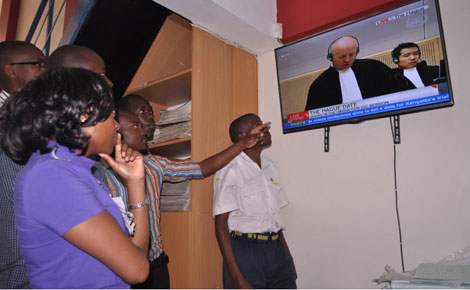×
The Standard e-Paper
Smart Minds Choose Us
 |
| Kisumu residents following proceedings at the International Criminal Court on television. [PHOTOS: FILE/ STANDARD] |
With a salary of Sh10,000, Dennis Omweno, a waiter in Nairobi says he cannot afford to pay any more bill, no less for television, which he has been getting for free all along.
A father of two, Omweno’s first born is in Standard One in an ‘academy’, his rent is Sh4,000 plus bus fare amounting to Sh3,000 per month.